This website is kept for archival purposes only and is no longer updated.
Using a wide variety of methods, astronomers have discovered over 3,000 exoplanets to date (and counting) largely with ground-based radial velocity surveys and the search for transits with the Kepler mission. Based upon these discoveries, our understanding of how planetary systems form and evolve has radically changed. Astronomers have found “hot Jupiters”, massive planets orbiting very close to their host stars, with orbital periods of a few days; they have also found “SuperEarths”, planets with diameters a few times that of the Earth. Models of planet formation, based upon studies of our own Solar System, did not predict that either of these kinds of objects would exist. Astronomers have also found planets in binary star systems, planets on highly eccentric orbits, and planets around dead stars — all new discoveries that were unexpected.
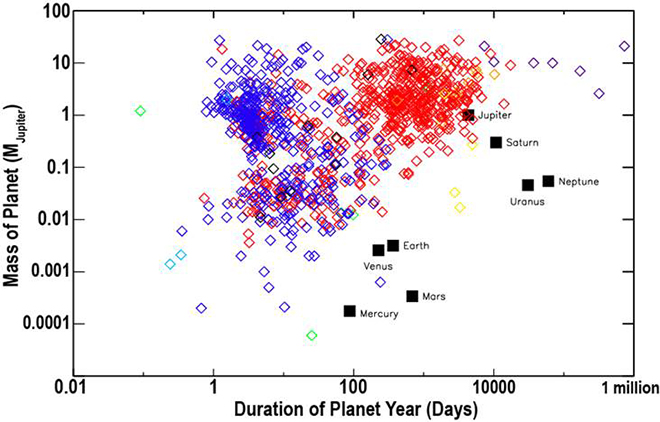 |
| Masses of discovered exoplanets by duration of orbit (planet year) compared to the Solar System. Data can be found at http://exoplanetarchive.ipac.caltech.edu |
Many of the exoplanets known were discovered through transit observations made by Kepler. Kepler has been an enormous success, and based upon the large number of discoveries made, astronomers have been able to conduct the first real “census” of extrasolar planets. Because of Kepler, we now know that about 1/6 of all stars have earth-sized planets around them, and that about 1/5 of sun-like stars have planets in their habitable zone (the range of distance from the host star for which there could exist liquid water on the surface of the planet).
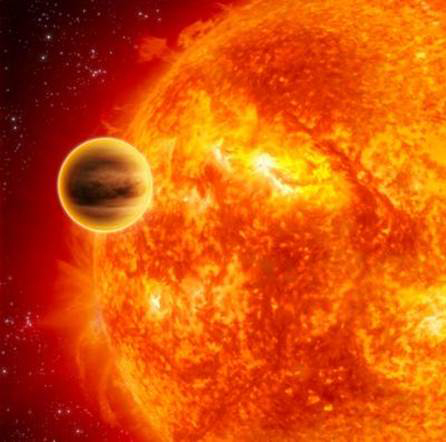 |
| Hot Jupiters. |
 |
| Super Earths. |
However, Kepler used a “pencil-beam” survey, looking deep over a single patch of sky. While this type of survey was ideal for carrying out the census that has been so successful, the scientific focus of TESS is finding planets around bright, nearby stars - the planets that are well-suited to follow-up observations and characterization with both ground-based facilities and missions such as Hubble and JWST. Because the majority of the planets found by Kepler were comparatively faint, most of them are unsuited to the sensitive follow-up measurements that are needed.
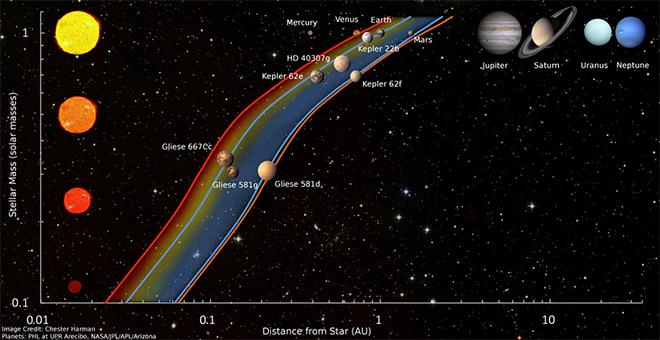 |
| Kopparapu et al. 2013 |
Over the course of its two-year mission, TESS will:
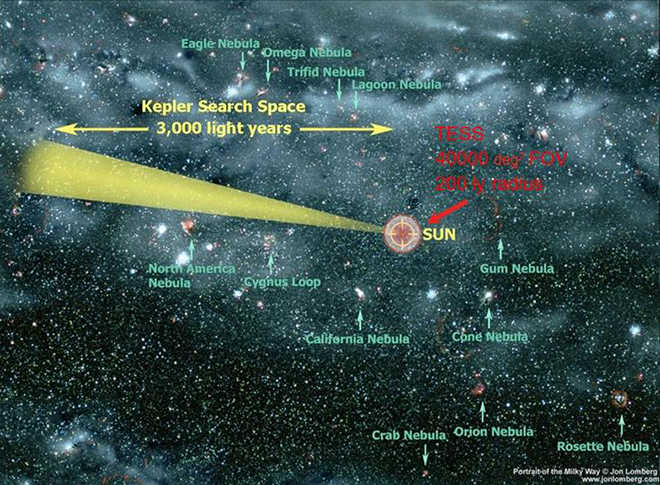 |
| NASA TESS search area (in red) for exoplanets compared to the NASA Kepler search area. TESS will specifically target an all-sky search for exoplanets around nearby, bright stars. |
Through the TESS observations described above, astronomers predict the discovery of over 1,600 new exoplanets, including ~70 that are about the same size as Earth. In addition, TESS will acquire full frame images of the entire 24x96 degree field-of-view every 30 minutes. From these data, it is expected that over 20,000 additional exoplanets will be discovered, most of which will be Gas Giants.
 |
| Host Star Magnitude by Planet Radius (RE) |
From the transit data alone, scientists will be able to determine the size of the planets and orbital parameters. Ground-based follow-up observations of these objects, possible because of the brightness of the host stars, will allow the determination of the planetary masses. Combining the two, radius and mass, will allow astronomers to determine the density of planets, and hence their bulk composition (are they gas giants? water worlds? big rocks, like Earth?). In addition, transit observations can be used to study the dynamics of planetary systems, such as planet-planet interactions and mutual inclinations. Additional followup observations, largely from space with HST and JWST, will allow direct measurement of the atmospheric composition and structure of some planets. This will open the door for a host of new discoveries about exoplanets, and perhaps of the processes behind the formation and evolution of planetary systems.
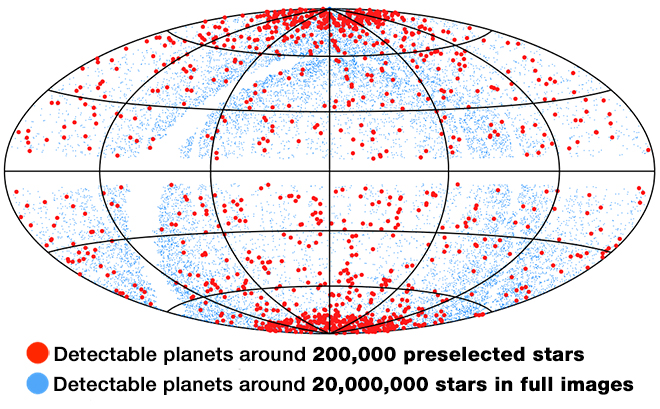 |
| Simulation of Expected TESS Exoplanet discoveries; Sullivan, et al 2015. |
In addition to the studies of exoplanets, TESS will feature a Guest Investigator program. Through this, TESS will provide independent scientists with observations of ~20,000 targets, in addition to the 200,000 nearby stars studied as part of the core science program, and NASA will support scientists in both the analysis of these data and in studies that take advantage of the full-frame images.
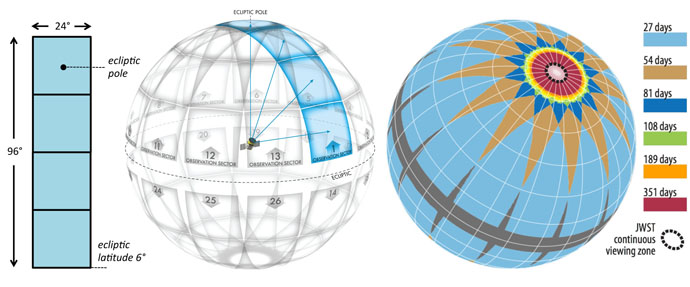 |
| Figure: Left. | The instantaneous combined field of view of the four TESS cameras. Middle. | Division of the celestial sphere into 26 observation sectors (13 per hemisphere). Right. | Duration of observations on the celestial sphere, taking into account the overlap between sectors. The dashed black circle enclosing the ecliptic pole shows the region which JWST will be able to observe at any time. |